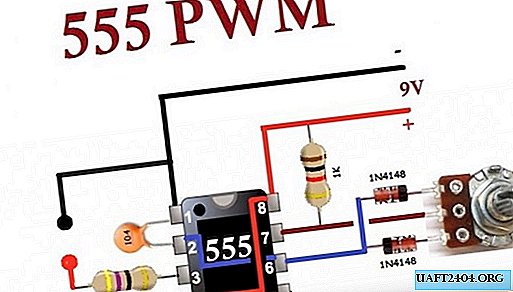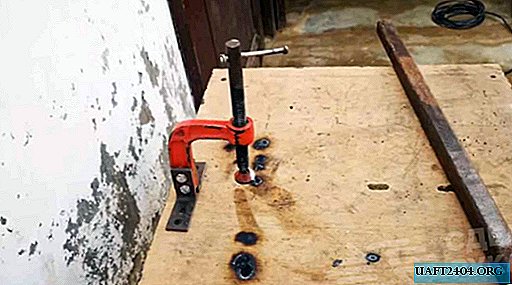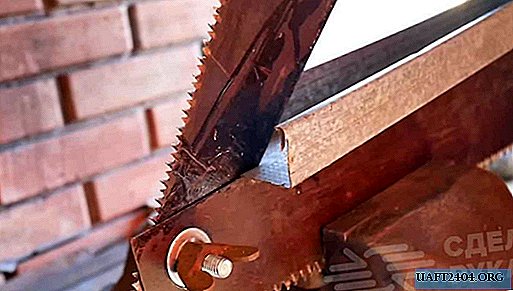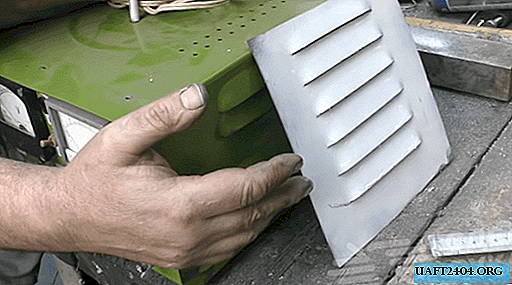Share
Pin
Tweet
Send
Share
Send
The simple schematic of the automobile PWM controller proposed by Jericho Uno is not a professional, fully debugged development, distinguished by its safety and reliability. This is just a small cheap experiment, assembled on affordable budget details and quite satisfying the minimum requirements. Therefore, its developer does not take responsibility for everything that can happen to your equipment during operation of the simulated circuit.
PWM controller circuit on the NE555

To create a PWM device, you will need:
- electric soldering iron;
- chip NE555;
- 100 kΩ variable resistor
- 47 ohm and 1 kΩ 0.5W resistors;
- 0.1 uF capacitor;
- two diodes 1N4148 (KD522B).
Step-by-step assembly of the analog circuit
We begin the construction of the circuit by installing jumpers on the chip. Using a soldering iron, we close the following timer contacts between each other: 2 and 6, 4 and 8.

Further, guided by the direction of electron motion, we unsolder the “shoulders” of the diode bridge on a variable resistor (current flow in one direction). The diode ratings are selected from available, inexpensive. You can replace them with any other ones - this will practically not affect the operation of the circuit.

In order to avoid short circuit and burnout of the microcircuit when unscrewing the variable resistor to the extreme position, we set the shunt resistance of 1 kOhm on the power supply (pins 7-8).

Since NE555 acts as a saw generator, to obtain a circuit with a given frequency, pulse duration and pause, it remains to choose a resistor and capacitor. An inaudible 18 kHz capacitor will give us a 4.7 nF, but such a small value of the capacitance will cause a warp of the shoulders during the operation of the microcircuit. We set the optimum to 0.1 μF (contacts 1-2).

Avoid the nasty "squeaking" of the circuit and pull the output to a high level with something low-impedance, for example, a 47-51 Ohm resistor.

It remains to connect the power and load. The circuit is designed for the input voltage of the vehicle’s onboard network 12V DC, but for a visual demonstration it will also start from a 9V battery. We connect it to the input of the microcircuit, observing the polarity (plus for 8 leg, minus for 1 leg).

It remains to deal with the load. As can be seen from the graph, when the output voltage was reduced by a variable resistor to 6V, the saw at the output (legs 1-3) was preserved, that is, NE555 in this circuit both the saw generator and the comparator at the same time. Your timer works in a-stable mode and has a duty cycle of less than 50%.

The module withstands 6–9 A of continuous DC current, so that with minimal losses, you can connect to it both the LED strip in the car and a low-power engine, which will scatter the smoke and blow off your face in the heat. More or less like this:


Or so:


The principle of operation of the PWM controller
The operation of the PWM controller is quite simple. The NE555 timer monitors the voltage at the capacitor C. When it is charged until it reaches its maximum (full charge), the internal transistor opens and a logical zero appears at the output. Next, the capacitance is discharged, which leads to the closure of the transistor and the logical unit arriving at the output. When the capacity is completely discharged, the system switches over and everything repeats. At the moment of charge, the current flows along one arm, and when discharged, it flows differently. By a variable resistor we change the ratio of the resistance of the shoulders, automatically lowering or increasing the output voltage. A partial frequency deviation is observed in the circuit, but it does not fall into the audible range.
Watch the video of the PWM controller
Share
Pin
Tweet
Send
Share
Send











